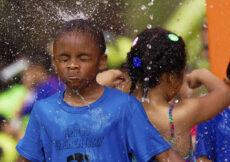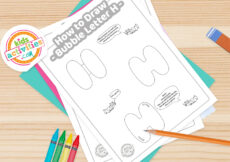Hiking is a fantastic way to introduce kids to the wonders of nature, while also getting some fresh air and exercise as a family. However, planning a hike with children requires a bit of extra thought and preparation to ensure it’s enjoyable for everyone! From choosing the right trail to packing essentials, here are some key tips for planning a kid-friendly hike.
1. Choose an Appropriate Trail
The most important aspect of a kid-friendly hike is the trail itself. When selecting a route, opt for:
- Shorter distances: Start with trails that are under 3 miles to keep young ones engaged without exhausting them.
- Easy terrain: Flat or gently sloping paths are ideal for children, especially for those who are new to hiking. Avoid steep or rocky trails that might be difficult for little legs to navigate.
- Points of interest: Trails with natural features like waterfalls, lakes, or wildlife spotting can keep kids excited along the way.
Check online for reviews or recommendations for family-friendly trails in your area. National parks and state parks often have designated paths that are perfect for children. It is important to study the route carefully beforehand. For example, in France, in Méribel, I prefer a circuit that goes through the educational farm, then to a mountain restaurant that offers local snacks for children. I also follow a plant discovery trail, then the waterfall path: there are islands that you hop from one to another, but everything is safe and well-marked.
2. Dress Comfortably
Dressing appropriately is key to keeping kids comfortable and happy throughout the hike. Make sure everyone is wearing:
- Sturdy shoes: Proper hiking shoes or sneakers with good grip can prevent slips and falls.
- Weather-appropriate clothing: Dress in layers so that kids can adjust to changes in temperature. Always bring rain gear or a light jacket, even if the weather seems fine.
- Sun protection: Hats, sunglasses, and sunscreen are essential to protect sensitive skin from sunburn.
3. Bring the Right Supplies
Pack wisely to ensure you have everything you need. Key items include:
- Plenty of water: Hydration is crucial, especially for active kids. Carry reusable water bottles or hydration packs.
- Snacks: Kids burn a lot of energy while hiking, so pack nutritious snacks like trail mix, fruits, and granola bars. Having regular snack breaks can also be a great way to keep their spirits up.
- First-aid kit: Accidents happen, so it’s smart to have band-aids, antiseptic wipes, and any necessary medications on hand.
- Navigation tools: Carry a map or GPS device in case you lose track of your location. Many kid-friendly trails are well-marked, but it’s always good to be prepared.
4. Make It Fun
Hiking with kids is as much about the journey as it is about the destination. Keep them entertained by:
- Playing games: Simple games like “I Spy” or a nature scavenger hunt can make the hike more interactive.
- Learning opportunities: Use the hike as a chance to teach your children about the environment. Point out different plants, insects, or animal tracks and explain what they are.
- Taking breaks: Kids may need more frequent rests, so be sure to stop often to let them catch their breath and explore their surroundings.
5. Set Realistic Expectations
It’s important to go into the hike with a flexible mindset. Children might not be able to hike as far or as fast as adults, and that’s okay. Be prepared to turn back early if needed, and celebrate any distance they manage to cover.
Patience is key—sometimes the best parts of the hike come from letting your kids explore at their own pace.
Hiking with kids can be a rewarding experience for the whole family. With careful planning, the right supplies, and a focus on fun, you can ensure that your little ones have a safe and enjoyable time on the trail. Whether you’re hiking in a nearby park or venturing into a national forest, the memories you create will be priceless.


































